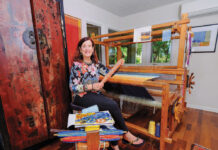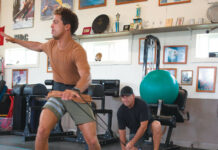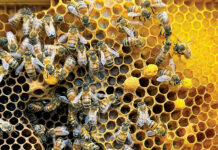
Kulanaa‘o
My friend Yukiko wants to move here from snowy Hokkaido, Japan, to study oceanography at Maui Community College. She registered for classes but has one concern: housing. Student housing on Maui has long been an issue for international, Mainland and outer-island students, forcing many to pay high rent or stay with host families until better options appear.
That problem is about to disappear.
As many locals have observed, there’s something big being built in Kahului, and it’s not a hotel or a subdivision. It’s Kulanaa‘o, a 400-bed dormitory that will help to provide affordable housing needed for a growing student-body.
Yukiko is pretty lucky—each apartment accommodates four at $625 a month per student. The dorms are fully furnished (including kitchen) and the rent includes high-speed Internet, cable television, and yes, electricity, water and garbage services. There are also adjoining student lounges, rec rooms and study areas.
And while parking is available for an additional monthly fee, Yukiko will be able to get along fine without a car: the campus, two malls, a grocery store and public library are all within a block of the dorms; up the street is the Maui Arts & Cultural Center for concerts; she can even join the paddling team at Kahului Harbor, or take the Superferry to O‘ahu for the weekend. The Lahaina-bound MauiBus also stops close to campus.
Visit www.kulanaao.com to apply or get more information.
—Kali Speere
The Windsurfing Movie
When I first met professional windsurfer and filmmaker Jace Panebianco in P¯a‘ia, he couldn’t tell me much about The Windsurfing Movie, partly because it was still in production, partly because he wasn’t sure where it would debut. Little did I know that the movie he produced with Johnny DeCesare would screen the opening night of the Maui Film Festival in June.
I sit with the audience as the lights dim. “Come on and Take a Free Ride” blares through the speakers and I hear a narrative voice: “In the beginning, most people didn’t even know what [windsurfing] was. I’d be sitting on the plane coming home from somewhere, and the guy next to me would say. ‘Oh, what do you do?’
“‘I’m a professional windsurfer.’
“‘Oh, you jump off mountains?’”
Ah, not exactly, as anyone who doesn’t windsurf quickly learns from the movie. With a bright-colored sail rigged to a carbon-fiber boom and tall mast—the mast locked into what’s really a modified surf board—windsurfers strap in, catching the wind as it skips across the ocean’s surface. They ride waves, pop off the lip for air, performing stunts worthy of an aerialist.
“I want people to really get a feeling for windsurfing,” says Panebianco. The Windsurfing Movie offers a Maui-centric version of the sport’s history and culture along with stories about some of great windsurfers who live and train here on Maui.
Panebianco interviews living-legend Robby Naish, sport giants Jason Polakow and Levi Siver, and fifteen-year-old protégé Kai Lenny, who says, grinning, “I want to compete on the world sport circuit. That’s how Robby made his mark . . . and that’s the road I want to go down.” The most touching story is of Maui-born Josh Angulo, who overcomes substance abuse to win the 2007 world championship.
To see the movie’s trailer or order a copy of the DVD, visit www.thewindsurfingmovie.com.
—Ashley Stepanek
Generation Hula
Each year, the brightest pupils from island halau are put to the test in a grueling three-day solo hula contest. Let me tell you, these hula dancers have some nerve. In addition to choreographing and performing two hula all by their lonesome, contestants are subject to a real nail-biter: an interview with a panel of judges that includes several of the most formidable kumu hula in Hawai‘i. Scary stuff. Especially considering that some of these competitors are mere kindergarteners!
The dancers, ages five to seventeen, come from around the Islands and as far away as Las Vegas, California and Japan to compete in Hula O Na Keiki. All undergo months of preparation. All female dancers are given the same chant to perform, all male dancers another. Their research into its kaona (hidden meaning), and how each student and his or her kumu interpret it in dance, costume, flora and showmanship, determine success the first day. The second day, participants perform a hula of their choice in the ‘auana (modern) style.
Hula O Na Keiki began as a way to perpetuate Hawaiian legends through hula and chants that would focus on history unique to Maui, Moloka‘i, Lana‘i and Kaho‘olawe. Thing was, there weren’t many such chants around. “Some years, our judges have had to create the chant; it’s a tremendous amount of work. Keali‘i Reichel, before he was so famous, even wrote a chant for us,” says Chris Kai‘a‘okamalie, event chairman. “It then becomes the
kuleana [responsibility] of the keiki to pass that knowledge on to others.”
Now in its seventeenth year, the festival can reflect on its own growth and impact on the hula community. “One contestant from a few years ago recently won Miss Aloha Hula at Merrie Monarch, so we are seeing this event become a stepping-stone to the bigger competitions,” says Kai‘a‘okamalie.
Hula O Na Keiki will be held November 9 through 11 at Ka‘anapali Beach Hotel. Spectators can participate in a lineup of cultural workshops and craft activities. For a schedule or to purchase tickets, visit www.kbhmaui.com/culture/hula.html.
—Sara De Palma





